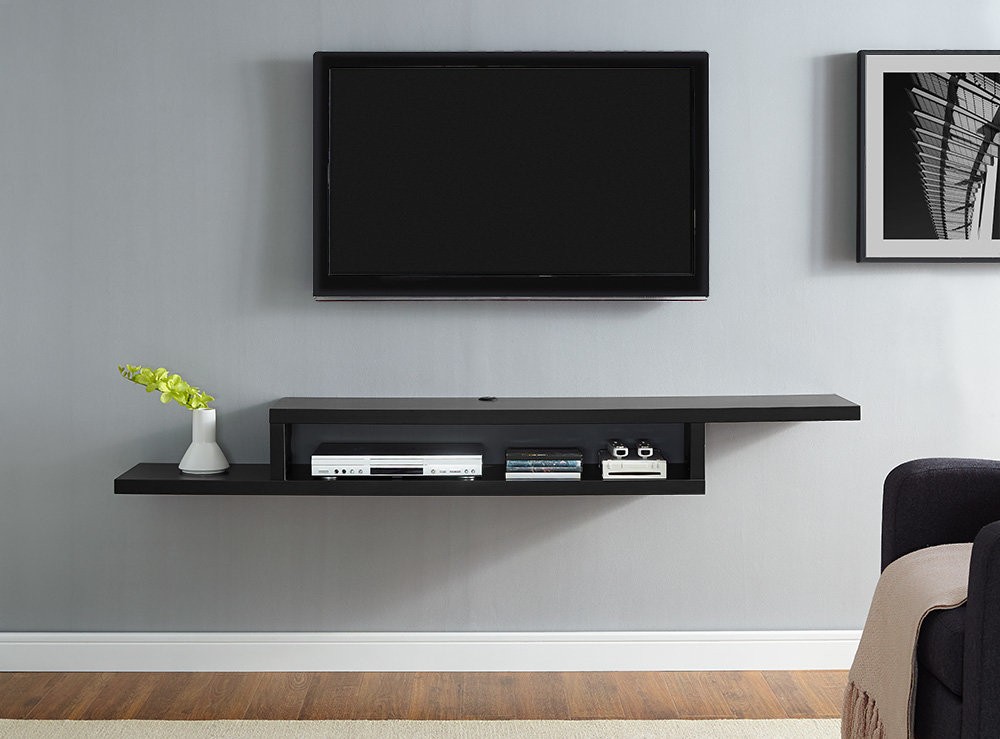

- White shelf under tv how to#
- White shelf under tv driver#
- White shelf under tv Bluetooth#
- White shelf under tv tv#
This TV stand is carefully constructed of solid pine and birch veneer for long-term durability and stability. Three cabinet doors with smooth round knobs and tempered glass, offer additional shelves for storage. Measure your television TVs are measured by diagonal length.
White shelf under tv how to#
Thanks to two cable management holes, tangling cords will not be an issue. White : TV Stands & Entertainment Centers Target / Furniture / Living Room Furniture / White : TV Stands & Entertainment Centers (443) How to pick the right TV stand Here are 3 simple ways to set up the perfect entertainment spot. Two shelves offer plenty of room for the cable box, gaming consoles, and more. Set the TV on the top shelf or mount the TV on the wall above the stand to give you more space for all your entertainment essentials. We also listened to typical pop tunes, such as Tracy Chapman’s “Fast Car,” to make sure the bass didn’t drown out voices and other instruments.Add some class to your family room with the Big Sur Deluxe TV Stand with Storage Cabinets and Shelf for TVs up to 55 Inches by Convenience Concepts. We tested the speakers’ bass by playing bass-heavy tunes such as Lil Baby’s “Woah” at loud volume, listening for the “tearing” sound of distortion, as well as the “chuffing” sound when a speaker is trying to push too much air through its bass port both of those noises can make listening intolerable.

The bass must also be reproduced at a level consistent with the mid range and treble, otherwise the sound becomes boomy or thin. Bass: Research shows that listeners prefer speakers that can play deep bass notes cleanly and loudly.Often, a speaker system does imaging well but doesn’t sound spacious, or vice versa we preferred speakers that did at least a pretty good job on both. Spaciousness, or soundstaging, is the feeling of envelopment that stereo speakers can produce, with the sound seeming to wrap around the listener and reach far beyond the wall behind the speakers ideally, this characteristic gives some sense of the space where the recording was made (or of the reverb added during mixing). Imaging and spaciousness: Imaging is the ability of stereo speakers to produce focused sonic “images” of the various singers and instruments positioned between the speakers, and sometimes even outside the speakers.Voice reproduction is the toughest thing to get right on a speaker, and all of our picks performed better in this area than their competitors did. Many musical instruments, such as saxophone and guitar, cover a similar frequency range. Because humans hear other people’s voices so much, people are especially sensitive to the naturalness of voice reproduction, and the human ear is most sensitive to the frequency range where the human voice resides. Voice clarity: Unless you’re testing subwoofers, any evaluation of an audio device should focus heavily on its voice reproduction.Extra features: All powered speakers include at least one analog audio input, but we tried to find models with other useful features, such as a phono input, digital audio inputs, and a remote control.

White shelf under tv Bluetooth#
Some of the models we tested offered support for more advanced Bluetooth codecs, such as aptX or aptX HD, but we didn’t require those.

Wireless connectivity: Among powered speakers, we looked only at models that include Bluetooth.We didn’t consider single-driver models because good, affordable two-way models can easily outperform them.
White shelf under tv driver#
The addition of a mid-range driver or extra woofers generally pushed a speaker above our price range. Configuration: All of the models we looked at are two-way designs, with one tweeter (for high frequencies) positioned above one woofer (for low frequencies) or vice versa.Previously we had set a floor of $100 per pair, but readers have requested something practical to use with an inexpensive mini stereo amplifier, so we eliminated that criterion. Above that price, you’re getting into models for serious audio enthusiasts, who have probably already developed strong ideas about the kinds of speakers they want. Cost: Our price limit for both the passive and powered categories was $600 per pair.Note that you can get better sound from these speakers by placing them on stands (such as the Sanus BF24B or Monoprice 39494) rather than on a shelf reflections off a shelf can alter the sound, a speaker on a shelf is positioned close to the wall (which is likely to make it sound boomy), and the shelf and whatever else is on it may rattle. We looked only at speakers that are small enough to actually fit on a large, sturdy shelf or perhaps on a credenza or table-but also large enough to produce sufficient bass on their own without a subwoofer. If you need something to use with a computer, for gaming or audio production, check out our best computer speakers guide. Size and styling: These speakers are all styled to suit a typical living room or den.


 0 kommentar(er)
0 kommentar(er)
